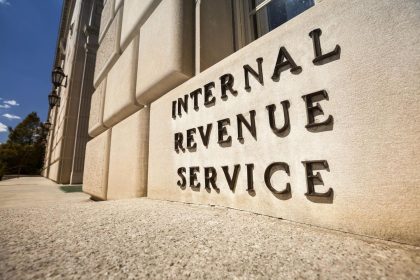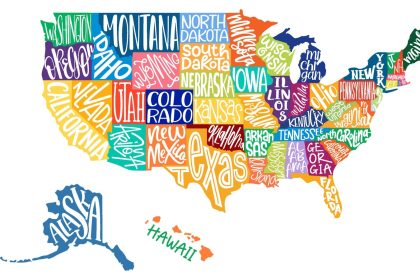This is a published version of our weekly Forbes Tax Breaks newsletter. You can sign-up to get Tax Breaks in your inbox here.
This month, I’m attending my second graduation of the season. This time, my son will be the one donning a cap and gown and walking across the stage. He’s heading to college—shout out to Temple University, where Quinta Brunson recently gave the commencement address—and we’re grateful that he was able to earn a scholarship to offset the cost. In case you haven’t heard, college is expensive these days—the average in-state student attending a public four-year institution and living on-campus will spend $27,146 for one academic year, while the average private, nonprofit university student spends $58,628 per academic year living on campus.
(You can find out more about Brunson’s speech and career advice that speakers gave new grads entering the workplace this year here. (☆))It’s no wonder that a majority of Americans don’t think going into debt for a four-year college degree is worth it. (☆) Only 22% of 5,200 survey respondents said that college is worth the cost if a student has to take on debt, while another 47% said a four-year degree is worth it only if the student doesn’t have to take out loans. Nearly one-third of respondents say college isn’t worth its cost, regardless. Most college graduates themselves are skeptical of the value of a degree today—only a third say college is worth the cost if loans are required.
You don’t need a degree to get a job in every industry. Increasingly, creating content on social media is a real source of income, with platforms such as Twitch, YouTube, Instagram, and TikTok now offering alternatives to old-school X (formerly Twitter) and Facebook. Despite this, many content creators fail to recognize the importance of treating their platforms as businesses. There are a lot of factors to consider, including whether an LLC or an S Corp will enable the creator to benefit from savings on federal income tax (spoiler alert: maybe).
College degree or not, every adult should have some measure of financial literacy. That includes an understanding of the tax code. Recently, TaxEDU, the educational program of the Tax Foundation, conducted a national tax poll to understand American taxpayers’ knowledge of and opinions about the tax code. The results: most Americans are confused by and dissatisfied with the federal tax code.
Specifically, TaxEDU found that more than two-thirds of respondents did not know the top federal income tax rate and over half did not know how tax brackets work. And, the majority of respondents also answered incorrectly when asked whether tax credits were more valuable than tax deductions (the answer is yes).
(If you’re interested in tax rates, you can see the tax rate schedules for 2024—along with tax tables and cost-of-living adjustments—here.)
Knowing where to get your information is key—the IRS has previously warned taxpayers about a series of tax scams and inaccurate social media advice that led thousands of taxpayers to file inflated refund claims during the past tax season. (☆)
At Forbes, we hope to be your first stop for great tax and financial information. That’s why, starting with this edition of the newsletter, you’ll see a new feature in the newsletter—Taxes from A to Z—highlighting tax and financial terms you need to know. This week? AFRs.
Enjoy the rest of your weekend!
Kelly Phillips Erb (Senior Writer, Tax)
Articles marked with (☆) are premium content and require you to log-in with your Forbes membership credentials. Not a subscriber yet? Click here to sign up.
Taxes From A To Z: A Is For AFR
AFR stands for applicable federal rates—basically, interest rates. Each month, the IRS publishes the AFRs, which are calculated using various economic factors, as revenue rulings.
The rulings contain several different rates, which can be confusing. The cheat? Which rate to use depends on the period and length of the loan. Under section 1274(d)(1), use the federal short-term rate for debts under three years, use the federal mid-term rate for debts over three years but not over nine years, and use the federal long-term rate for debts over nine years.
The AFRs are used for a number of transactions—including loans between family members. (☆) Intrafamily loans must charge the current AFR. If you don’t, the IRS could argue that you’re making a disguised gift to the borrower.
Filing Statistics
When the filing season opened in January 2024, the IRS announced a limited-scope Direct File pilot, which it claimed would allow the IRS to evaluate the costs, benefits, and operational challenges associated with providing the option to taxpayers.
According to the IRS, Direct File users reported a high degree of satisfaction and quick answers to their filing questions. In a GSA Touchpoints survey of more than 11,000 Direct File users, 90% of respondents ranked their experience with Direct File as “Excellent” or “Above Average.” Most survey respondents who filed taxes in the prior year reported having to pay to prepare their taxes last year. Among survey respondents, 47% of users paid to file their taxes last year, and 16% did not file last year at all.
When asked what they particularly liked, respondents most commonly cited Direct File’s ease of use, trustworthiness, and that it was free. Additionally, 86% of respondents said their experience with Direct File increased their trust in the IRS.
(You can read what some taxpayers had to say to Forbes about their experiences here. (☆))
As a result of what they characterized as a successful pilot, the U.S. Department of the Treasury and IRS have announced that Direct File will be a permanent, free tax filing option. (☆)
That doesn’t mean that everyone is happy. Some are concerned that the IRS is taking charge of both calculating taxes owed and receiving tax payments, raising a conflict of interest. Some believe that an independent party should calculate their taxes, separate from the collecting authority, to ensure oversight in the system.
Questions
Student loans remain in the news. One borrower wants to know:
I know I can use my IRA to pay educational expenses without a penalty. Will paying off my student loans count?
The good news: if you are 59½ or older, you may withdraw funds from your traditional IRA for any reason—including paying off student loans—and not be subject to an early withdrawal penalty (you would simply pay income tax on the distributions).
The not-so-good news: If you are younger than 59½, the withdrawal would be subject to an early withdrawal penalty of 10% unless it meets an exception—like the one for eligible education expenses. That’s in addition to income taxes on the amounts that are withdrawn.
Unfortunately, education expenses include tuition, fees, books, supplies, and equipment—if the individual is at least a half-time student, room and board count, too. If you pay those expenses from your traditional IRA, they are not subject to the penalty. But the definition doesn’t include repaying student loans.
Roth IRAs are a little different. If you make a withdrawal from your Roth IRA earnings before you reach age 59½ and before the account is five years old, you may be subject to an early withdrawal penalty unless an exception applies, such as eligible education expenses. As with a traditional IRA, those expenses do not include repaying student loans. (But, if you withdraw the original contributions from your Roth IRA—not the earnings—no penalties apply.)
Also worth noting? Normally, if you take money out of your 529 plan for any reason other than eligible educational expenses, you will be subject to tax on the plan’s income, plus a 10% penalty. Beginning in 2024, you can roll any unused 529 funds into a Roth IRA without incurring a penalty—thanks to SECURE Act 2.0. The Roth IRA must be established for the beneficiary of the 529 plan (the student), and not the account owner (typically, a parent).
—
Do you have a tax question or matter that you think we should cover in the next newsletter? We’d love to help if we can. Check out our guidelines and submit a question here.
A Deeper Dive
With a reverse mortgage (☆), you borrow against the equity in your home—sort of like a home equity loan. The payments, which can be in a lump sum, a monthly payment, or a combination of the three, are treated like advances against the equity. Restrictions—including age (you have to be at least 62)—apply.
Reverse mortgages used to be almost synonymous with predatory lending, but thankfully, restrictions on them have curbed much of the abuse. Unfortunately, scammers are still targeting them—earlier this month, a Chicago businessman, pleaded guilty to a federal fraud charge related to a home repair and reverse mortgage scam.
Reverse mortgage payments aren’t taxable for federal income tax purposes. (In contrast, if you sold your home, the gain would be taxable subject to the exclusion on capital gains from the sale of your main home.)
Interest that accrues on a reverse mortgage isn’t deductible until you pay it—that usually happens at the end of the reverse mortgage. Unfortunately, your ability to deduct that interest may be limited—courtesy of the Tax Cuts and Jobs Act, which limits the deductibility of home equity loans (HELOCs) used to pay off credit cards or other expenses not related to “acquiring, constructing, or substantially improving” your qualified residence.
Tax Filing Dates And Deadlines
📅 June 17, 2024. Second-quarter estimated payments are due for individuals for the 2024 tax year.
📅 June 17, 2024. Due date for U.S. citizens or resident aliens residing overseas or in the military on duty outside the U.S., on April 15, 2024. If you can’t file by the deadline, you can request an extension. (☆)
📅 June 17, 2024. Due date for filing FinCEN Form 114, Report of Foreign Bank and Financial Accounts—or FBAR—for taxpayers residing outside of the U.S.
📅 July 31, 2024. Due date for individuals and businesses in parts of Massachusetts affected by severe storms and flooding that began on September 11, 2023. More info here.
Tax Conferences And Events
📅 June 3-6, 2024. AICPA-CIMA Engage 24. Aria Resort & Casino Las Vegas, Las Vegas, Nevada. Registration required.
📅 June 6-7, 2024. NYU School of Professional Studies Federal Real Estate and Partnerships Tax Conference. Mayflower Hotel, Washington, DC. Registration required.
📅 June 12-14, 2024. 16th American Bar Association (ABA) Annual U.S. and Latin America Tax Practice Trends. Mandarin Oriental, Miami, Florida. Registration required.
📅 June 17-21, 2024. National Association of Black Accountants (NABA) Insight 2024 FLOW. Aria Resort & Casino, Las Vegas, Nevada. Registration required.
Noteworthy
The IRS announced that Fumino (Fumi) Tamaki will be the agency’s new chief taxpayer experience officer. Tamaki will be responsible for setting the strategic direction for improving the agency’s taxpayer experience and identifying opportunities to make continuous improvements for taxpayers and the tax professional community.
Baker McKenzie announced the arrival of Principal Tax Advisor Cara Harrison in Chicago. Harrison brings over 16 years of experience advising companies on complex global tax issues.
Sovos, a provider of tax, compliance and trust solutions and services, announced the launch of TINCheck. With TINCheck, businesses can verify names and tax ID numbers with the IRS database, the Office of Foreign Assets Control (OFAC), the Death Master File (DMF), and nearly 30 additional government databases and global watchlists.
—
If you have career or industry news, submit it for consideration here.
Trivia
How much do you think the top 1% of taxpayers by income account for in terms of share of total federal income taxes paid?
A. 1%
B. 12%
C. 42%
D. 64%
Find the answer at the bottom of this newsletter.
Our Team
I hope you’ll get to know some of our staff and contributors. This week, I asked our team the same question that TaxEDU asked in its survey: To the best of your knowledge, what tax rate applies to the top U.S. federal income tax bracket?
Many of those on our team got pretty close. Those who knew the exact answer—37%, potentially subject to some surtaxes—included Kelly Phillips Erb (Senior Writer, Tax), Mitchell Martin (Editor, Digital Assets), Matthew Roberts (Contributor, Tax), and Ashley Case (Contributor, Tax).
Key Figures
That’s the number of Forms 1040 filed in 2021, the last year for which a complete set of IRS data is available, reporting jury duty pay. Money you receive from serving on a jury must reported on your federal income tax return.
Trivia Answer
The answer is (C) 42%.
According to tax data, the share of income taxes paid by the top 1% increased from 33.2% in 2001 to 42.3% in 2020. If you got it right, kudos! In a national poll conducted by the Tax Foundation’s educational program, TaxEDU, 78% of respondents got this wrong—most guessed 12%.
Feedback
How did we do? We’d love your feedback. If you have a suggestion for making the newsletter better, let us know.
Read the full article here


















